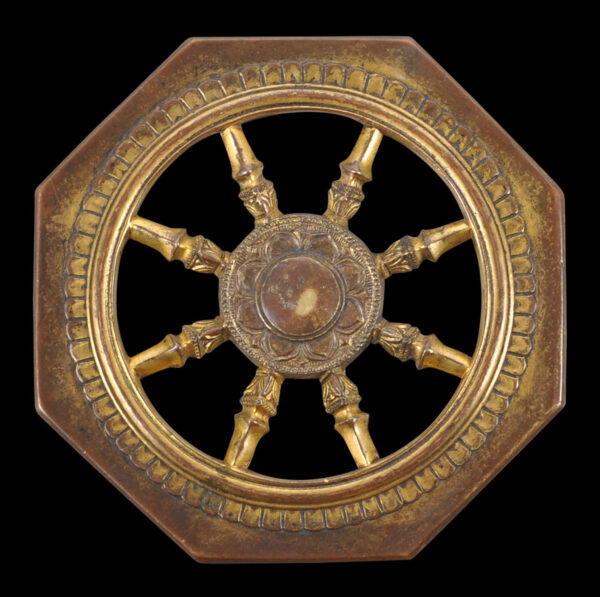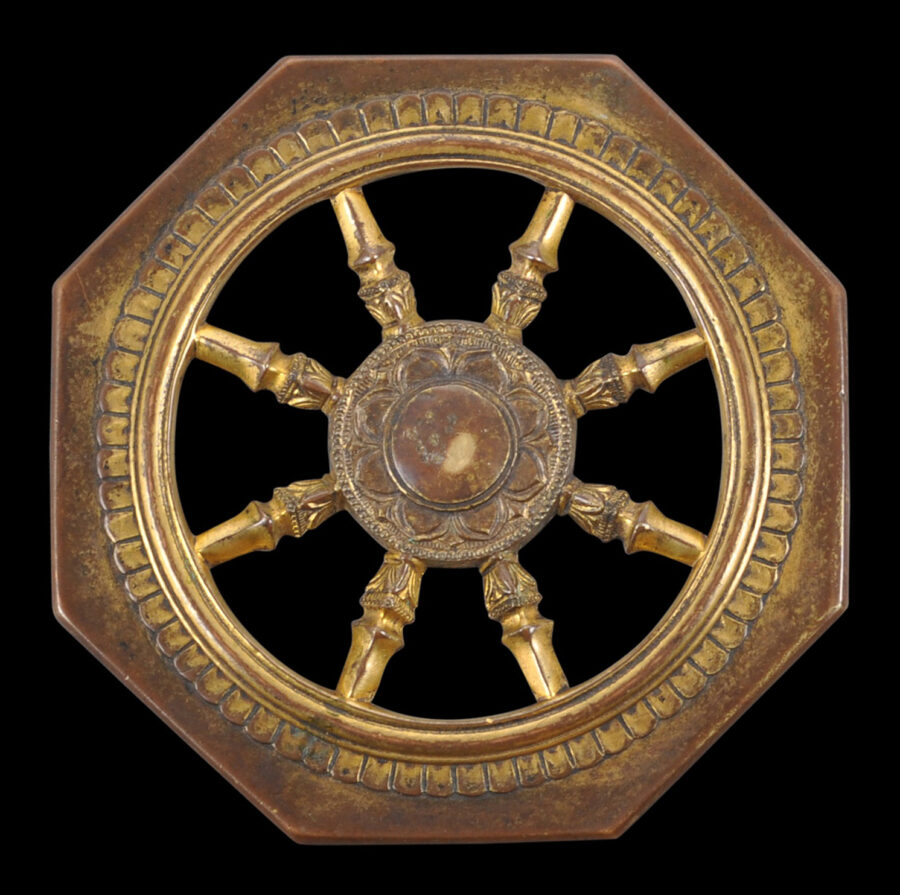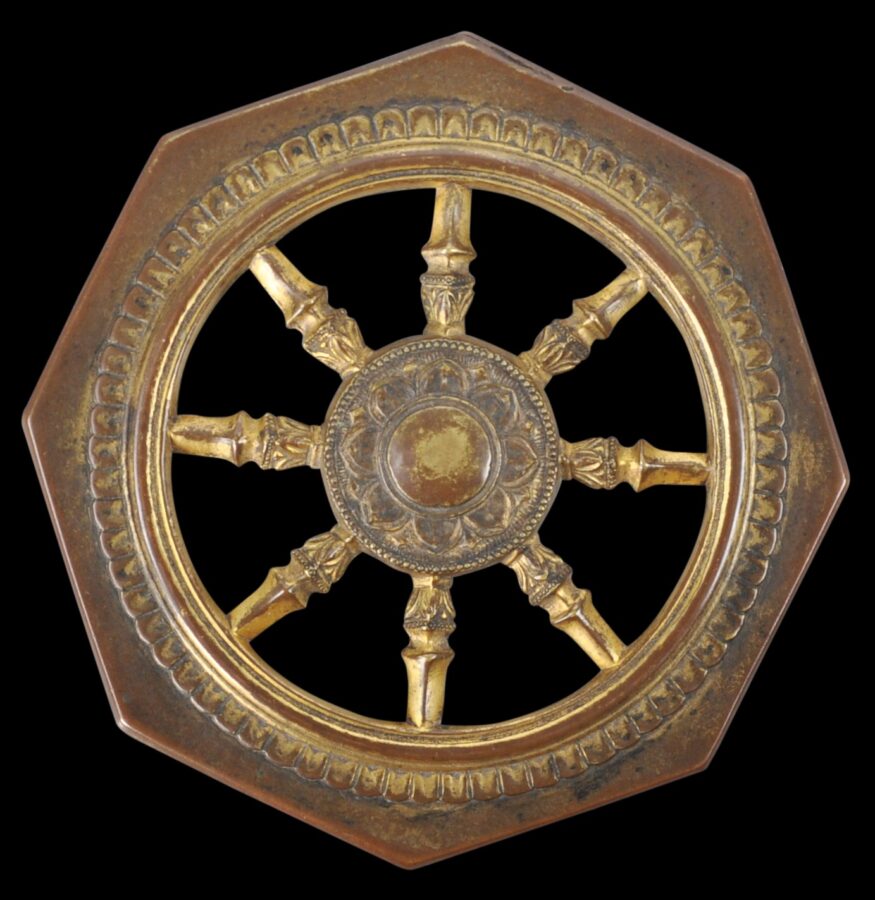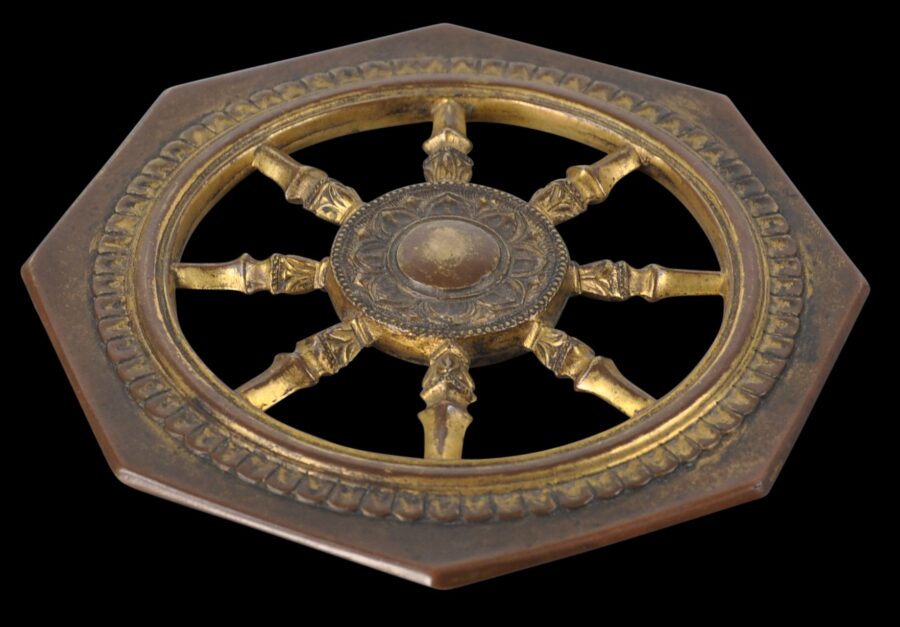This superb Japanese gilded copper dharma wheel dates to the 13th century. It was used in Japanese Tantric Buddhist ritual, most probably by priests of the Shingon sect
It is double sided – with similar designs on both sides.
It has eight spokes, each formed as vajra spikes, that radiate from a central roundel decorated with a lotus which represents Buddhist rebirth. These are encased within an outer border of eight straight sides, the outer ring being engraved with a fine border of lotus petals.
See an almost identical example in the Minneapolis Institute of Art, and another in the Metropolitan Museum of Art. A related example is in the Tokyo National Museum. All are attributed to the 13th century.
Such a wheel symbolises the Buddhist law or creed. In Buddhist texts and rituals, the phrase ‘turning the wheel of the law’ refers to the act of teaching by the Buddha Shakyamuni. Each of the eight spokes and eight corners and sides represents one of the moral admonitions of the Noble Eightfold Path. Correspondingly, the central lotus flower has eight petals.
The rimpo or cakra was an ancient Indian solar symbol of royalty. It was incorporated into Buddhism as the ‘Wheel of Law’ and represents the teachings of the the supreme Buddha of the Tendai and Shingon sects.
The Shingon tradition has its origins in Buddhist Tantra in India between the second and sixth centuries. From India it was transmitted to China, and in the ninth century it was transmitted to Japan. The form that Shingon took as it arrived in Japan has barely changed to this day.
The Shingon tradition has the third largest number of adherents among the various Japanese Buddhist sects. Many other sects have been deeply influenced by Shingon tenets and practice. It was introduced to Japan from Tang China in the ninth century. At that time, there was much religious exchange between China and Japan – Japanese monks would travel to China for instruction, for example. One of the appealing characteristics of Shingon compared with existing Buddhist sects in Japan at the time, was that Shingon ritual was more dramatic and visually interesting. Shingon was also assimilated with the existing indigenous religion of Shinto. This also helped Shingon to be more widely adopted. This is the context with which the ritual item here can be seen.
The dharma wheel is in excellent condition. It has obvious age, a wonderful presence, with comparables being included among some of the world’s most important museum collections.
References
Payne, R.K., The Tantric Ritual of Japan – Feeding the Gods: The Shingon Fire Ritual, International Academy of Indian Culture and Aditaya Prakashan, 1991.





